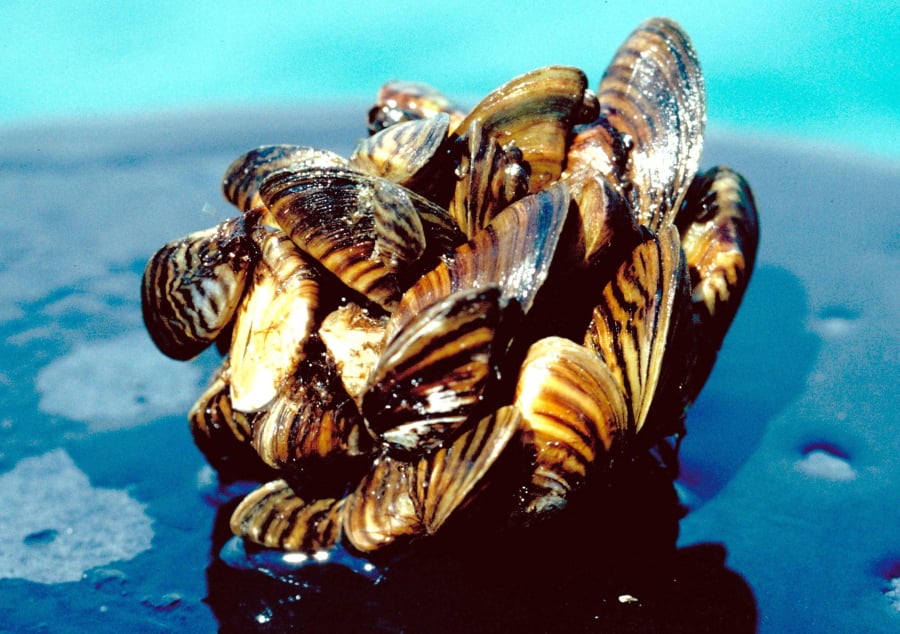BOISE, Idaho — The invasive quagga and zebra mussels have a $100,000 bounty on their “heads.”
The U.S. government is offering the six-figure prize for the best suggestion on how to stop their relentless and destructive spread because scientists say they are stumped.
“We might as well give it a try,” said Sherri Pucherelli, a biologist with the U.S. Bureau of Reclamation. “Open water. That’s really where the challenge is. Nothing has been developed right now that causes complete eradication in a large water body.”
The filter-feeders that syphon in water to pluck out microscopic organisms can throw food chains out of balance, and their sheer numbers in attaching to surfaces can clog pipes at reservoirs and damage boat motors. Giant water bodies turning aquamarine blue is a sign that the base of the food chain is being depleted, risking starvation for other species, including sport fish.
Quagga mussels approach an inch in length while zebra mussels can be about twice that size. The species are native to Russia and Ukraine, and are believed to have arrived in the U.S. in the 1980s aboard ships that released ballast water into the Great Lakes.
They attach to boats and trailers and travel long distances, and their microscopic larvae can survive in water inside a boat or even an angler’s wading boots. Also, the mussels can sense toxins and close their shells.
The Bureau of Reclamation first started dealing with the mussels after discovering them in 2007 in Lake Mead in southeastern Nevada and northwestern Arizona. They’ve multiplied so fast that scientists now estimate the entire volume of the lake is filtered by the mussels every five days.
Federal officials say the only area not yet invaded in the contiguous United States is the Columbia River Basin in the Pacific Northwest. The basin is heavily used for hydroelectric power, and officials estimate it will cost $500 million annually to prevent the mussels from clogging pipes and infrastructure.
The environmental damage to the food chain could further strain struggling runs of salmon and steelhead in the basin, where more than a dozen species are listed under the Endangered Species Act.
The mussels are getting close to the basin. Sampling last fall found larvae of quagga or zebra mussels at Tiber Reservoir in north-central Montana. It was the first positive test in the state.
Federal and state agencies have mostly tried to contain the spread of mussels, typically with boat inspections. The goal of the prize competition is eradicate mussels in large water bodies. The deadline for ideas is Feb. 28.
Specifically, federal scientists are seeking a solution that kills 100 percent of the mussels in large water bodies, is cost-effective and environmentally sound. That means native species must survive whatever kills the invasive mussels.
“We can kill mussels,” said David Raff, science adviser at the Bureau of Reclamation. “Chlorine is very effective. But you can’t dump chlorine into a reservoir.”
The bureau has been experimenting with ultraviolet light and substances that prevent the mussels from adhering to pipes and other infrastructure. Mussel infestations could increase costs that would have to be passed on to consumers. The agency has 53 hydroelectric projects supplying energy and delivers water to 31 million people each year. Also, with partners, it manages nearly 300 recreation sites.
The mussels “are a huge problem currently and it has the potential to be a much bigger problem,” Raff said.
That threat prompted the governors of 19 Western states in November to send a letter urging Interior Secretary Ryan Zinke to put in controls by spring to prevent the mussels, including mandatory inspections and decontamination of boats leaving infected water bodies.



